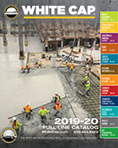Drones In Construction
How Are Drones Used In Construction?
Drones with specialized software have allowed construction projects to be more efficient, building projects to be better managed, and inspections to be more thorough. Drones allow contractors to capture, analyze and interpret data about their various jobsites.
These are just a few things drones can help you with.
-
Surveying Your Jobsite
-
Accurately Measuring Stockpiles
-
Monitoring Site Security
-
Improving Communications
-
Accessing Impressive Aerial Views
-
Inspecting Detailed Site Maps
-
Keeping Jobs On Schedule
-
Conducting Roof Inspections
Drones can be equipped with cameras, GPS units, thermal sensors, and infrared sensors. The instruments capture data by flying over the jobsite in a predetermined pattern. The collected information is transferred in real time to a computer via radio signals or WIFI. Specialized drone software analyzes the data and allows contractors to interpret the results for action.
The basic uses include many common surveying functions that range from layout to volume estimations. The images can provide progress reports either in photos or connected to a project management program. And drone technology can help monitor jobsites for safety and security.
Easily Monitor Project Progression
These flying technological wonders are helping contractors improve their efficiencies and enhance their customer relations. Drones can produce impressive aerial views and give clients a grasp of the project’s progression, especially when the clients are not able to be physically present on a site. This helps them feel assured that their investment is being utilized efficiently.
Balfour Beatty, a London-based general contractor with operations world-wide has incorporated drone technology into many facets of its operations. “More than ever, owners are relying on our ability to push the innovation envelope,” affirms Daniel Shirkey, senior director of technology and operations improvement in California.
“Drones drive efficiencies into every facet of the construction process that result in cost and time savings for our clients. That’s a win-win in my book.” Daniel Shirkey, Balfour Beatty
Accurate Measurements = Less Waste
An example of this benefit occurred on a Balfour Betty project on the West Coast. Drones were used to monitor the earthwork portion of a contract on a complex educational site development. Their subcontractor’s earthwork contract had been written for maximum import and export quantities. This approach often creates disputes between subcontractor and owner on the accuracy of material moved.
The Balfour Betty project team flew drones to capture aerial images of the cut and fill site capturing weekly progress. The images were analyzed using a drone data software capable of providing verifiable earthwork quantities. The project team used the precise quantities output to accurately pay the earthworks contractors for material moved just after the item was completed. The almost real-time result documented a substantial savings in that line item. The project owner was able to redirect credit for enhancements on the current project.
How To “Ease In” To Drone Use
For many contractors Investing in drone technology will be a radical transformation of job responsibilities, sub-contractor relationship, and project management. While the initial purchase price for basic drone kits have become economical, the costs of implementation can be underestimated. One option is to hire subcontractors offering specialized drone information services that can be purchased on a project by project basis.
Thus, it is imperative to develop a strategic, thoughtful and safe framework to introduce drone technology on your jobsites.
What Contractors Need To Know To Fly Legally
Along with increasing data capacity, contractors need to consider who will be operating their drones. Safe and responsible drone operations are imperative for all organizations with UAS programs, and operator training is a key component of program management.
Each drone used for commercial purposes must be individually registered. If the drone weighs less than 55 lbs. owners must comply with The Federal Aviation Administration (FAA) rules for small unmanned aircraft, specifically Part 107 of FAA regulations. https://www.faa.gov/news/fact_sheets/news_story.cfm?newsId=22615
Drone operators also need to comply with FAA regulations. They must have a remote pilot certificate with a small UAS rating, or be under the direct supervision of a person who holds such a certificate.
Navigating the current sea of training providers can be a complex process. One useful resource is the Association for Unmanned Vehicle Systems International (AUVSI). They offer seminars, conferences and webinars on the current state of the rapidly changing drone technology field. They also provide operator training through the Trusted Operator Program. The certification program is available to remote pilots and companies.
Check Your Insurance
Another consideration of drone use is insurance. Construction firms should verify that their general liability policies include coverage for drone usage. This technology is so new many policies may exclude coverage for drone use.
If contractors hire subcontractors for drone technology, be sure to verify that all drones and operator’s certification is in order. And make sure all subcontractors have the appropriate drone coverage in place, with the general contractor added as an additional insured on the policy.
Drone software generates five basic output types:
1. Aerial Photographs
These images are usually stitched together to make one large image, geometrically corrected so the photo has the same lack of distortion as a map. (aka: Orthomosaics)
2. Thermal Images
Generated by thermal video cameras, drones can detect radiation in the long-infrared range of the electromagnetic spectrum. The images provide contractors comparisons of thermal signatures on structures. Differences in the signatures may indicate heat leaks in faulty thermal insulation or moisture intrusion. (aka: Thermographs)
3. Distance and Volume Measurements
By overlapping imagery of the same features from two perspectives, it is possible to calculate distance and volume measurements. Contractors use this data to measure the volume of a stockpile or to calculate cut and fills. (aka: Photogrammetry)
4. Light Detection and Ranging (LiDAR)
LiDAR is really cool! It is a remote sensing method. Pulsed lasers measure ranges (variable distances) to the Earth. When combined with other data recorded by the airborne system, LiDAR generate precise, three-dimensional information about the shape of objects and their surface characteristics. Surveyors and construction engineers favor this technology.
5. Video
Video is the most common, and most complex type of drone data. Often stored in compressed form, the files contain video data, audio data along with synchronization information and metadata such as GPS location and directional data. Processing this data is complex because the analysis program often needs to sort through all 18,000 pieces of frame data.
NOTE: Both the raw data and the resultant output files require massive amounts of storage capacity. So it is important to choose the output style that best matches the task.
Future Developments
Contractors can plan on drone technology expanding into construction in two ways.
- Drone technology providers are asking the FAA to extend the range pilots are permitted to operate their craft. In practical terms, they are hoping to use drones beyond visual line of sight (BVLOS). The FAA’s Small Unmanned Aircraft Regulations (or Part 107) don’t currently allow for BVLOS operations. For example, pilots can’t operate drones at night, above 400 feet, or over people or property owners who aren’t aware of the flight.
Should the FAA adopt policies for BVLOS operations, contractors could immediately benefit. BLVOS applications could include package delivery, such as transporting a spare part from the shop to the jobsite, inspecting long stretches of grade such as railroad, pipe laying and mainline paving; inspections of powerlines and windmills; and mapping large section of rough terrain.
 2. There are groups of inventors who are applying robotics to drone technology. For example, Skymul, an Atlanta-area startup, is developing a drone system that will tie rebar on a bridge deck. The software will control up to 8 drones equipped with rebar tying tools to secure rebar after it has been laid out on the deck.
2. There are groups of inventors who are applying robotics to drone technology. For example, Skymul, an Atlanta-area startup, is developing a drone system that will tie rebar on a bridge deck. The software will control up to 8 drones equipped with rebar tying tools to secure rebar after it has been laid out on the deck.



